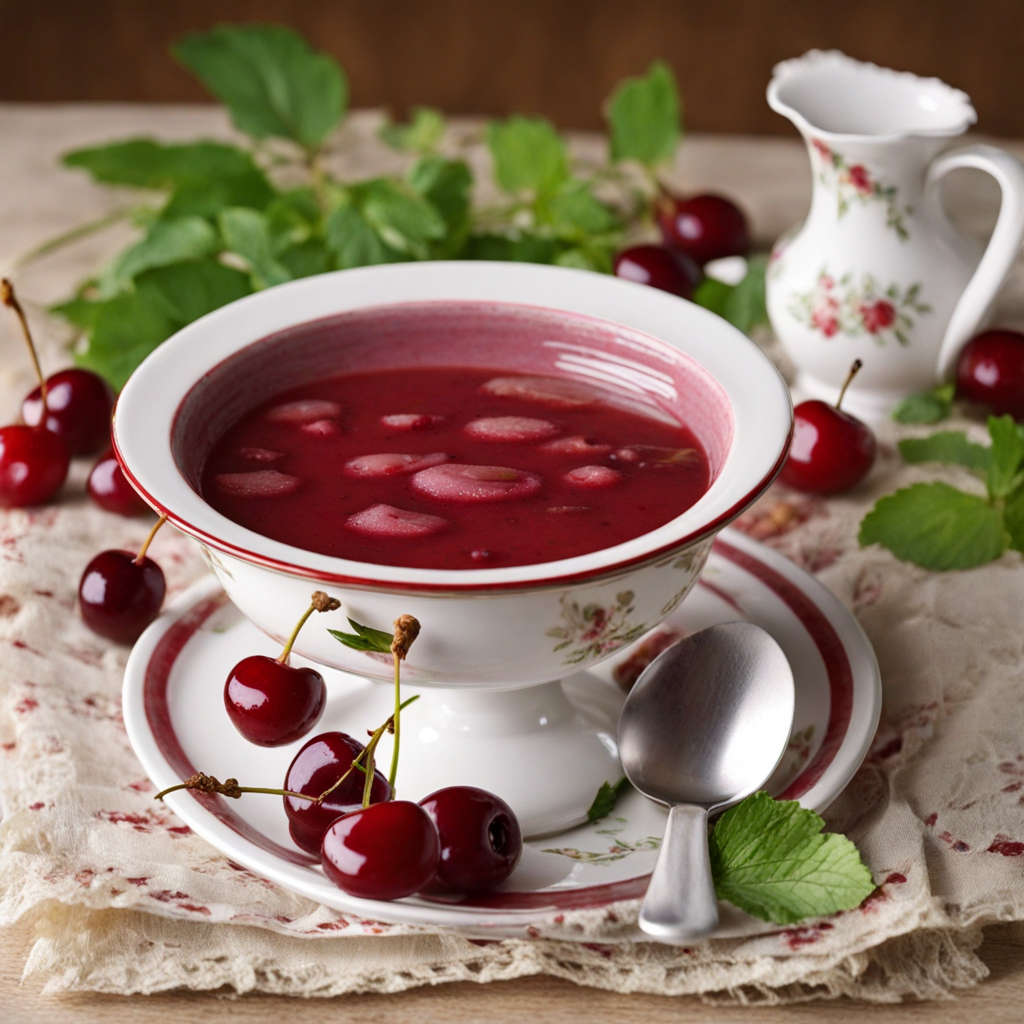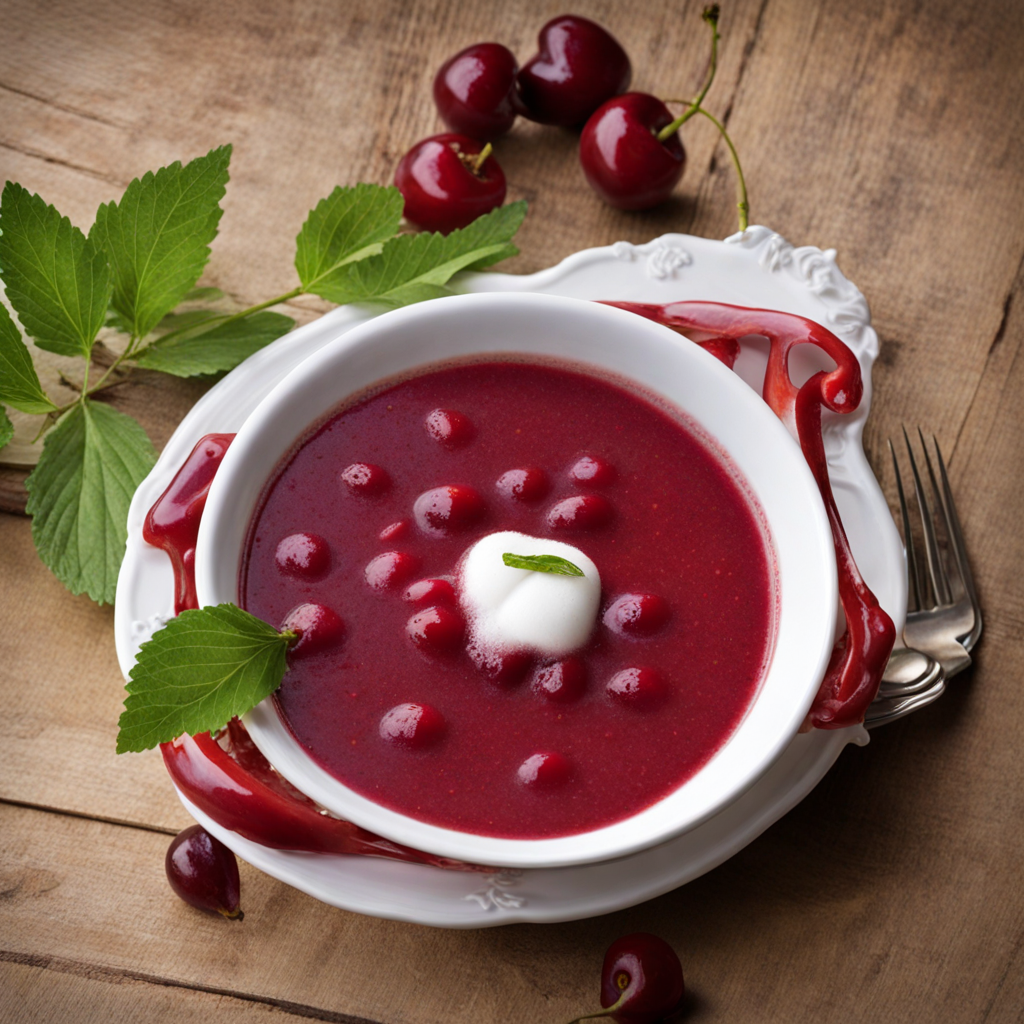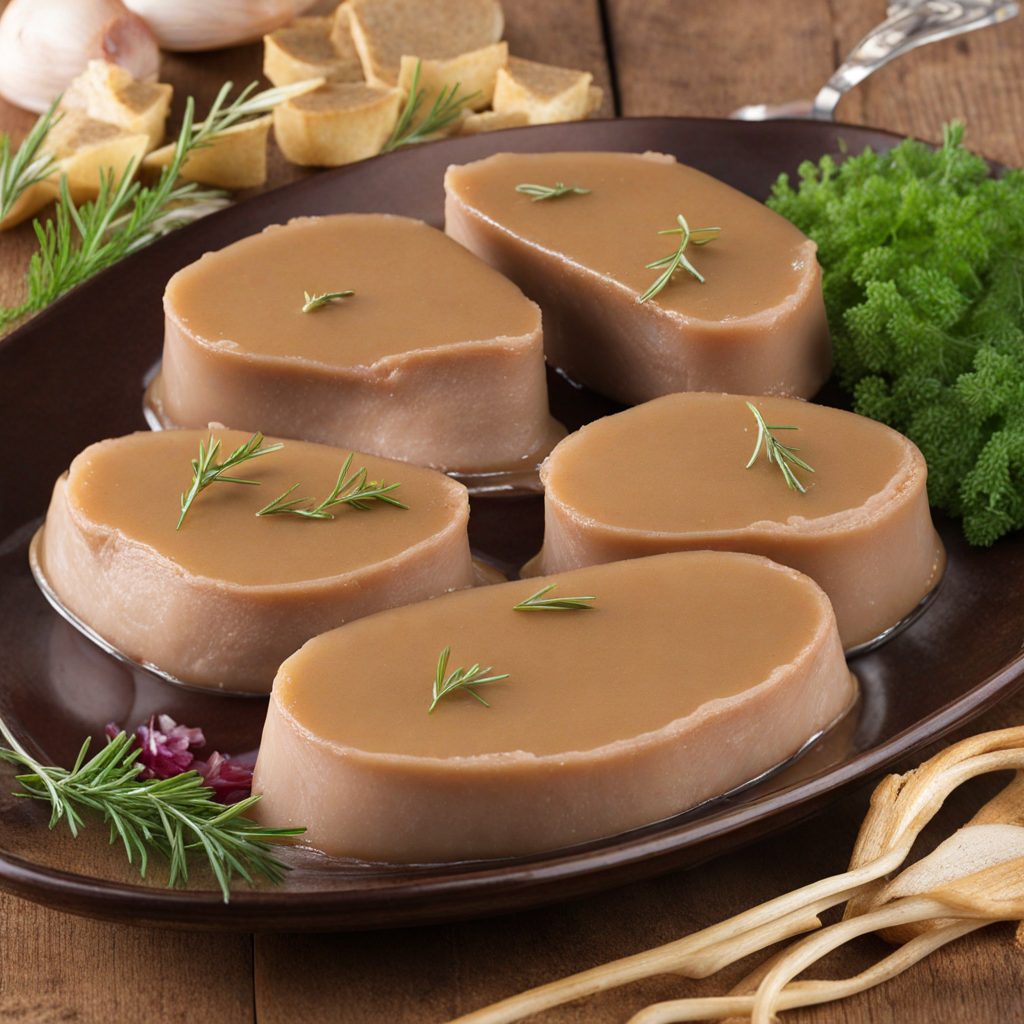Meggyleves
Meggyleves, a traditional Hungarian cherry soup, is a delightful blend of sweet and tart flavors that captivates the palate. This vibrant dish is made primarily from ripe sour cherries, which lend their characteristic tanginess and a beautiful crimson hue. The cherries are typically cooked down with sugar and a hint of lemon to enhance their natural sweetness, resulting in a refreshing and slightly tart soup that can be enjoyed both warm and cold. The incorporation of spices such as cinnamon or cloves adds a subtle warmth, elevating the flavor profile and providing a comforting aroma that envelops the dish. This soup can be served as an appetizer or dessert, depending on personal preference. When chilled, it transforms into a refreshing summer treat, perfect for warm days. A dollop of sour cream or a sprinkle of fresh mint can be added as garnish, bringing a creamy texture and a burst of freshness that complements the cherry base beautifully. The balance between the tartness of the cherries and the sweetness of the sugar creates a symphony of flavors that is both intriguing and satisfying. Meggyleves not only showcases the rich agricultural heritage of Hungary, where sour cherries are abundant, but it also embodies the country's love for seasonal ingredients. With its easy preparation and delightful complexity, this dish invites adventurous eaters to explore the unique taste of Hungarian cuisine. Whether enjoyed as a light soup or a sweet conclusion to a meal, Meggyleves offers a memorable culinary experience that highlights the beauty of simplicity in food.
How It Became This Dish
The History of Meggyleves: A Sweet and Sour Tradition from Hungary Meggyleves, a delightful Hungarian cherry soup, is a dish that captures the essence of the country's culinary heritage. As a sweet and sour chilled soup, it offers a refreshing contrast to the often rich and hearty fare that characterizes much of Central European cuisine. To understand the depth of meggyleves, we must delve into its origins, cultural significance, and its evolution over time. #### Origins of Meggyleves The roots of meggyleves can be traced back to the rich agricultural landscapes of Hungary, where cherries have been cultivated for centuries. Historical records suggest that the cherry tree was brought to Hungary by the Romans around the 1st century AD. The temperate climate of the Carpathian Basin allowed for the flourishing of various cherry varieties, particularly the sour cherry (Prunus cerasus), which is the star ingredient in meggyleves. Sour cherries were not only prized for their flavor but also for their preservative qualities. In a time before refrigeration, Hungarian households would frequently make use of seasonal fruits by canning or preserving them, leading to the development of various recipes, including soups. The incorporation of sour cherries into a soup format reflects a practical approach to utilizing available ingredients, while also showcasing the natural tartness of the fruit, which pairs beautifully with a variety of sweet and savory elements. #### Cultural Significance Meggyleves holds a special place in Hungarian culture, often enjoyed during the summer months when cherries are in season. The soup is traditionally served chilled, making it an ideal dish for hot weather. It embodies the Hungarian tradition of enjoying fruits not only as desserts but also as integral components of savory dishes. In Hungarian households, meggyleves is often associated with familial gatherings, festivals, and celebrations. It is commonly featured on summer menus, delighting both locals and tourists alike with its vibrant color and refreshing taste. This soup is not just a dish; it represents the agricultural bounty of the region and the importance of seasonal eating, a concept that is deeply embedded in Hungarian culinary philosophy. Moreover, meggyleves is often considered a comfort food, evoking memories of childhood for many Hungarians. Families would gather in kitchens to prepare this dish, passing down recipes from generation to generation. It symbolizes the warmth of home-cooked meals and the nurturing aspect of Hungarian hospitality. #### Development Over Time As with many traditional dishes, meggyleves has evolved over time. Initially, the soup was likely a simple preparation of sour cherries boiled with water and sweetened with sugar or honey. However, as culinary practices advanced and regional influences merged, the recipe took on new dimensions. By the 19th century, meggyleves began to incorporate additional ingredients, reflecting the changing tastes of Hungarian society. The introduction of sour cream added a creamy texture, while the use of spices such as cinnamon and cloves provided warmth and complexity. This evolution was part of a broader trend in Hungarian cuisine, where the fusion of flavors and textures became more prominent. The 20th century brought about further innovations. With the rise of modern culinary techniques, chefs began experimenting with meggyleves, introducing elements such as wine or even a touch of lemon juice to enhance the tartness of the cherries. Additionally, variations of meggyleves emerged, including versions made with other fruits like strawberries or raspberries, showcasing the adaptability of the dish to incorporate local ingredients. In recent decades, there has been a resurgence of interest in traditional Hungarian foods, spurred by a growing appreciation for local and seasonal ingredients. As a result, meggyleves has seen a revival in both home kitchens and restaurants, where chefs are reinterpreting classic recipes while still honoring their roots. #### Modern Interpretations and Global Recognition Today, meggyleves is not only a beloved dish in Hungary but is also gaining recognition on the international stage. As global culinary trends shift towards lighter, healthier options, dishes like meggyleves are being embraced by those seeking refreshing and innovative recipes. Its vibrant color and unique flavor profile make it an attractive addition to menus around the world. In contemporary cuisine, chefs are taking creative liberties with meggyleves, experimenting with garnishes such as fresh mint, yogurt, or even edible flowers to elevate its presentation. Some have even turned it into a dessert by thickening the soup with cornstarch or adding a scoop of ice cream, transforming this traditional dish into a modern culinary experience. Furthermore, meggyleves has found its way into food festivals and cultural events, where it is celebrated alongside other Hungarian delicacies. The soup is often served alongside traditional pastries or as a starter in multi-course meals, allowing diners to experience the diverse flavors of Hungarian cuisine. #### Conclusion In conclusion, meggyleves is more than just a cherry soup; it is a reflection of Hungary's agricultural heritage, cultural practices, and evolving culinary landscape. From its humble origins rooted in practicality to its modern interpretations that embrace creativity, meggyleves serves as a reminder of the importance of food in connecting people to their history and culture. As it continues to be enjoyed by both locals and visitors, this delightful dish stands as a testament to the rich tapestry of Hungarian cuisine, celebrating the beauty of simplicity and the joys of seasonal ingredients. Whether served as a refreshing summer appetizer or a comforting bowl of nostalgia, meggyleves remains an enduring symbol of Hungary's gastronomic identity.
You may like
Discover local flavors from Hungary







